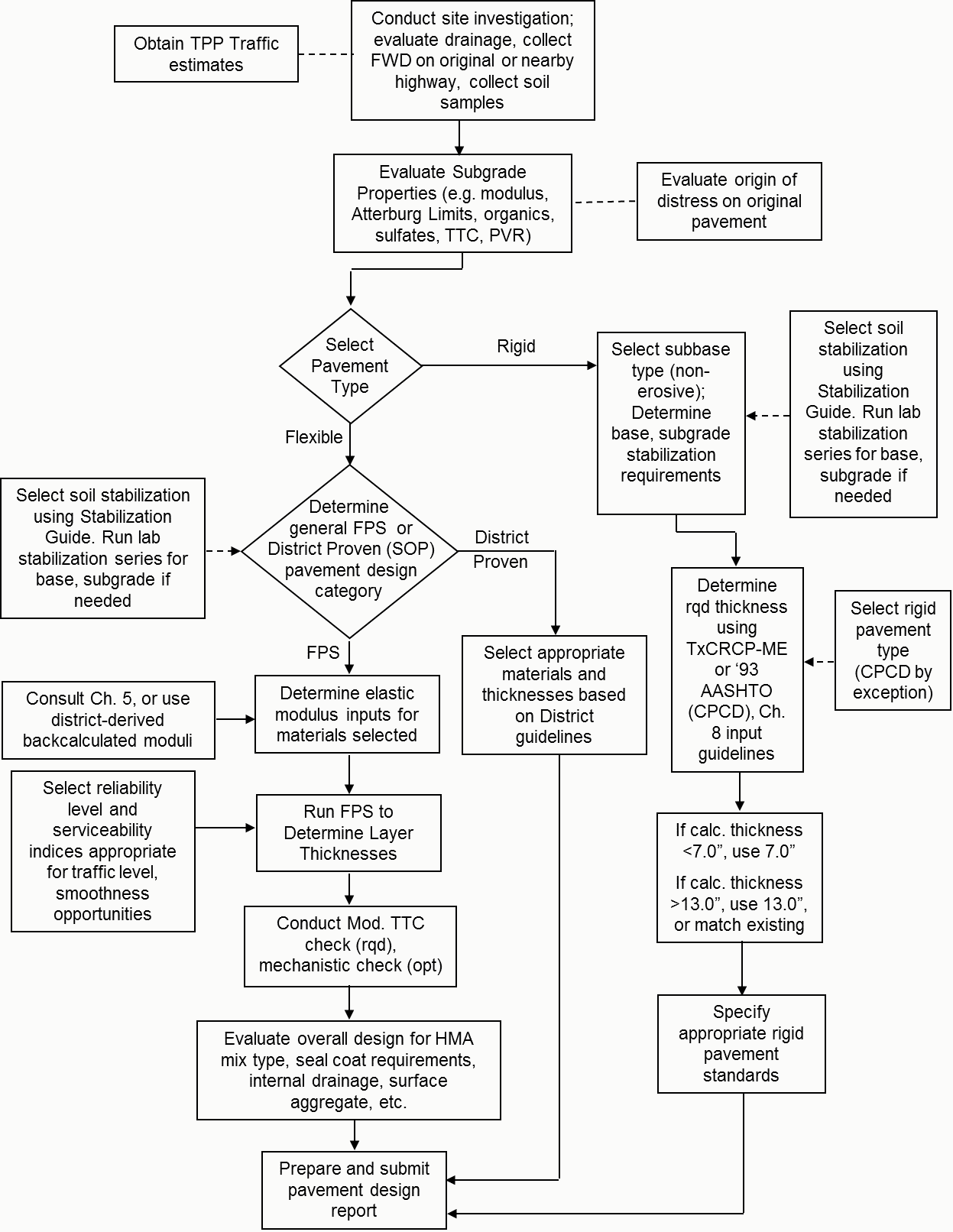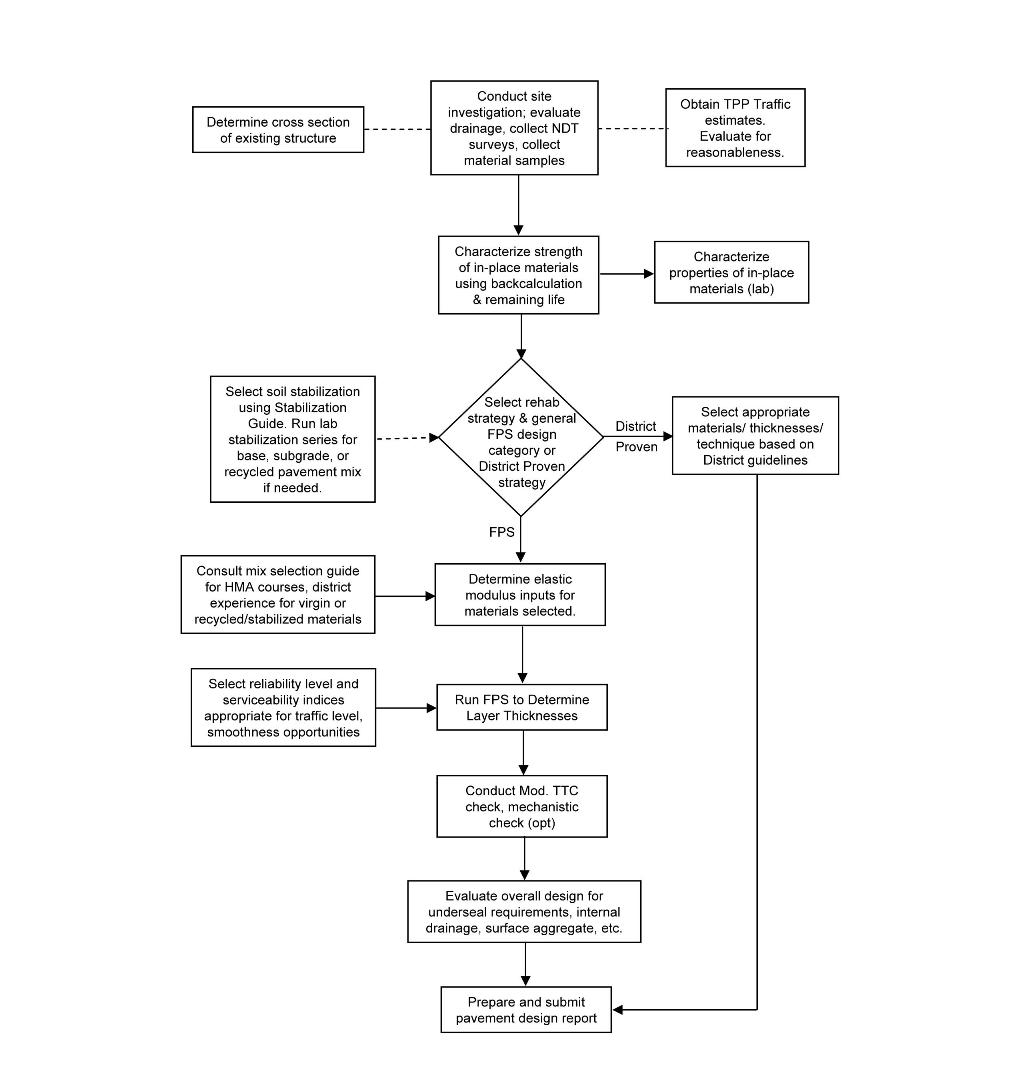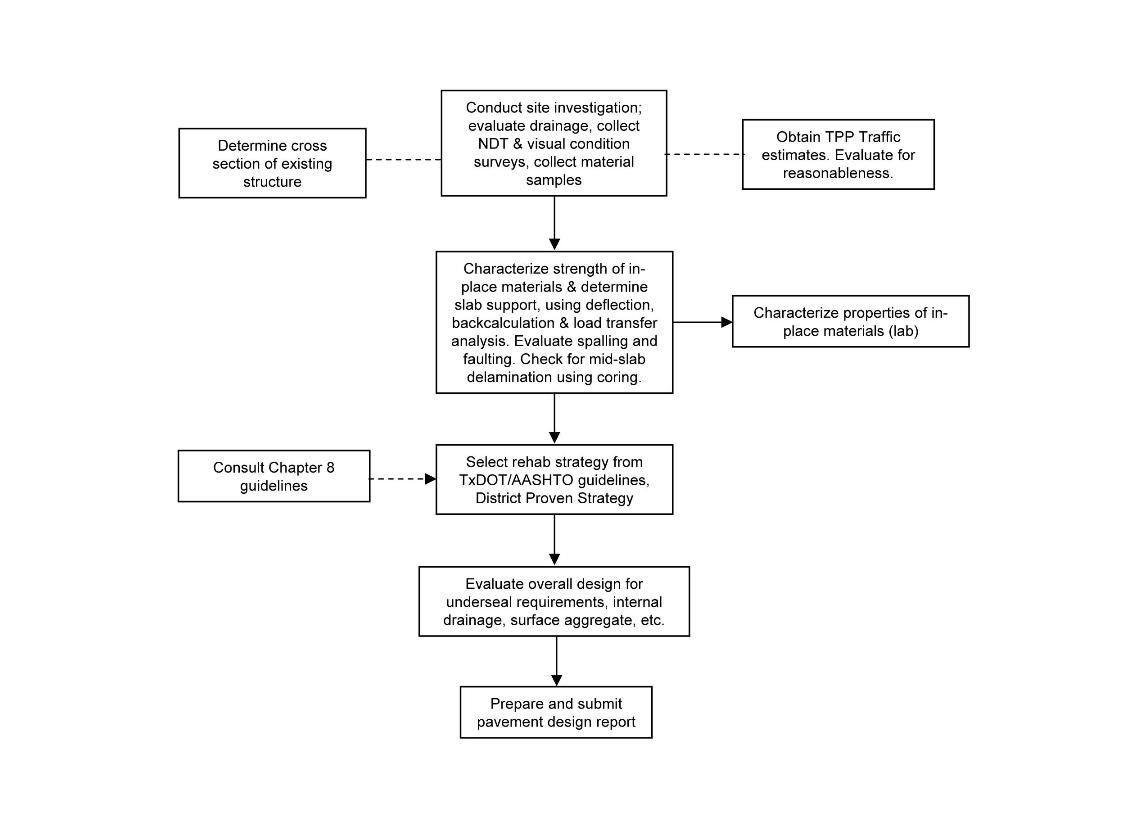Section 7: Pavement Design Categories
Anchor: #i10088907.1 Definitions
There are four pavement design categories:
- Anchor: #NLMKMDSY
- “new” pavement design Anchor: #HHXSSHGQ
- pavement reconstruction design Anchor: #QTOQGYTE
- pavement rehabilitation design Anchor: #MXQNSJAF
- pavement preservation.
It is very important that the designer conduct an early investigation to determine which category applies to the project.
The following table lists the definitions for each pavement design category.
|
Term |
Definition |
|---|---|
|
“new” pavement |
A combination of a base and surface course placed on a subgrade to support the traffic load and distribute it to the roadbed for flexible pavements or a combination of a base and a PCC slab for rigid pavements. |
|
pavement reconstruction |
Construction of a new pavement structure, which usually involves complete removal and replacement of the existing pavement structure including new and/or recycled materials. |
|
pavement rehabilitation |
Resurfacing, restoration, and rehabilitation (3R) work undertaken to restore serviceability and to extend the service life of an existing facility. This may include partial recycling of the existing pavement, placement of additional surface materials, or other work necessary to return an existing pavement, including shoulders, to a condition of structural or functional adequacy. |
|
pavement preservation |
Pavement preservation extends highway service life and provides smoother, safer and more reliable roads. Preservation approach selects the most cost-effective action to address a specific condition and performance need, providing the optimal means of minimizing life-cycle costs. |
|
NOTE: These definitions do not necessarily coincide with program definitions. |
|
Anchor: #i1008924
7.2 Example of Conditions for Each Pavement Design’s Usage
“New” Pavement Design. The “new” pavement design category assumes a pavement structure is constructed from point “A” to point “B” and there is no existing pavement along the proposed route. It may include a new parallel roadbed, such as, when a two-lane highway is transformed into a divided four-lane highway.
Pavement Reconstruction Design. Pavement reconstruction design assumes there is an existing pavement along the projected route. It is further assumed the structural condition of existing pavement is in such deteriorated condition that removal of all or part of the existing pavement is necessary. Also, there is the possibility that adjustments to the vertical and/or horizontal alignment make reconstruction necessary.
Figure 2-8 provides a flow chart for the design process for new pavements or a full reconstruction.
Figure 2-8. Design process for a new pavement/full reconstruction.
Pavement Rehabilitation Design. Pavement rehabilitation design assumes there is an existing pavement structure along the project route. The vertical and/or horizontal alignment will not change significantly. Also, it is assumed the existing pavement structure possesses a degree of remaining life. More information can be found in the Flexible and Rigid Pavement Rehabilitation Training Courses available on the Maintenance Division website under the Pavement Engineering link. Refer to Training in Chapter 1, “Introduction,” for more information.
Figure 2-9 and Figure 2-10 provide flow charts for flexible and rigid pavement rehabilitation design, respectively.
Figure 2-9. Design process for flexible pavement rehabilitation.
Figure 2-10. Design process for rigid pavement rehabilitation.
Pavement Preservation Design. Pavement preservation is planned and performed to improve or sustain the condition of pavements. Preservation activities generally do not add capacity or structural value but restore the overall condition of pavements. No pavement structural design is required for pavement preservation projects. Examples of preservation projects could include but not limit to seal coat, thin ACP overlays 2” thick or less, mill and inlay 2” thick or less, hot-in-place recycling, microsurfacing/slurry seal, scrub seal, half depth repair/full depth repair, diamond grinding and grooving, joint and/or crack sealing, and slab replacement.
Anchor: #i10964617.3 Federal Aid Eligibility for Preservation and 3R/4R Projects
Preservation (also known as preventive maintenance) and rehabilitation projects start from the planning stage, referred to as the 4-year Pavement Management Plan. Districts plan these projects including timing, locations, treatment types, cost, etc., based on a series of factors such as pavement distresses, ride quality, skid resistance, age and other factors during the 4-year pavement management plan season. These projects are logged into two database systems, TxDOTCONNECT and Maintenance Management System (MMS). Then they are imported into a pavement management system, Pavement Analyst (PA), for evaluation from the network-level perspective. PA can forecast pavement condition, perform advanced analysis to answer what-if scenarios, and recommend optimized pavement work plans for preventive maintenance and rehabilitation to maximize the condition of the network based on constrained funding.
Projects in PA's final 4-year pavement management plan list classified as preventive maintenance would be eligible for federal-aid preservation funding with no pavement design or design exceptions required. Projects not on that optimized project list would be a routine maintenance project not eligible for federal-aid funding. 3R/4R projects are eligible for federal-aid funding but require a pavement design to show that the pavement structure is adequate for at least 10 years of future traffic, and all design exceptions would need to be addressed or formally approved.


